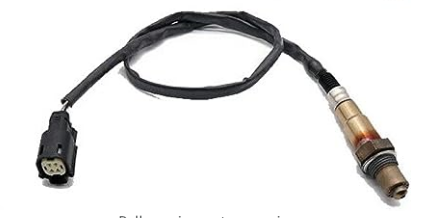Your cart is currently empty!
How many o2 sensors does a car have? Are they upstream and downstream o2 sensors?
Greetings, automotive enthusiasts and curious minds alike! In the realm of automotive technology, there are components that play a pivotal role in optimizing engine performance and emission control. Among these, oxygen sensors—often referred to as O2 sensors—stand as sentinels of combustion efficiency. This article aims to answer two common questions: How many O2 sensors does a car have, and what's the distinction between upstream and downstream sensors? Join us on this journey of demystifying the intricate world of O2 sensors.

How many o2 sensors does a car have?
Under the Hood Exploration
How many o2 sensors does a car have?Modern vehicles typically come equipped with one or more oxygen sensors. The exact number varies based on factors such as engine configuration, exhaust system design, and emission regulations. Most vehicles, however, are equipped with at least two oxygen sensors—a primary and a secondary.
Primary O2 Sensor (Upstream)
The primary O2 sensor, also known as the upstream sensor, is positioned within the exhaust manifold or exhaust pipe, near the engine. Its purpose is to measure the oxygen content in the exhaust gases before they enter the catalytic converter. This data is used by the engine control module (ECM) to adjust the air-fuel mixture for optimal combustion efficiency.
Secondary O2 Sensor (Downstream)
The secondary O2 sensor, also known as the downstream sensor, is located after the catalytic converter. Its role is to monitor the efficiency of the catalytic converter in reducing harmful emissions. The data it provides helps the ECM verify whether the converter is functioning as expected.
Upstream and Downstream: Unveiling the Distinction
Understanding Their Roles
We know How many o2 sensors does a car have.The differentiation between upstream and downstream O2 sensors lies in their respective roles within the exhaust system. The upstream sensor focuses on optimizing combustion efficiency, ensuring that the air-fuel mixture is precisely calibrated for efficient power generation. On the other hand, the downstream sensor evaluates the performance of the catalytic converter, contributing to emission control and compliance with environmental standards.
A Synergy of Precision and Performance
Balancing Power and Responsibility
The presence of both upstream and downstream O2 sensors is a testament to the intricate balance between engine performance and environmental responsibility. While upstream sensors fine-tune the combustion process, downstream sensors ensure that emissions are within acceptable limits.We know How many o2 sensors does a car have. This synergy embodies the commitment of the automotive industry to delivering powerful yet environmentally conscious vehicles.
Conclusion
In conclusion, the question of how many o2 sensors does a car have. is a multi-faceted one, with the answer varying depending on vehicle specifications. The distinction between upstream and downstream O2 sensors adds a layer of sophistication to the process. These sensors are not mere components; they are guardians of combustion efficiency and environmental consciousness. As you navigate the world of automotive technology, remember that every drive is a culmination of precision and performance, orchestrated by the harmonious interplay of O2 sensors working diligently behind the scenes. Embrace the insights provided by modern engineering, and drive forward with the assurance that your vehicle is operating at the pinnacle of efficiency and responsibility.
That's all from How many o2 sensors does a car have.
My point of view
One response to “How many o2 sensors does a car have? Are they upstream and downstream o2 sensors?”
-
Hi there, for all time i used to check webpage posts here early in the dawn, since i enjoy to learn more and more.
234-4703 Oxygen Sensor (7) 15894 Oxygen sensor (9) bad oxygen sensor (7) Infiniti QX4 (7) Nox Sensor (89) O2 Oxygen Sensor (17) O2 sensor (83) Oxygen O2 Sensor (8) Oxygen Sensor (297) Oxygen Sensors (20)






Leave a Reply